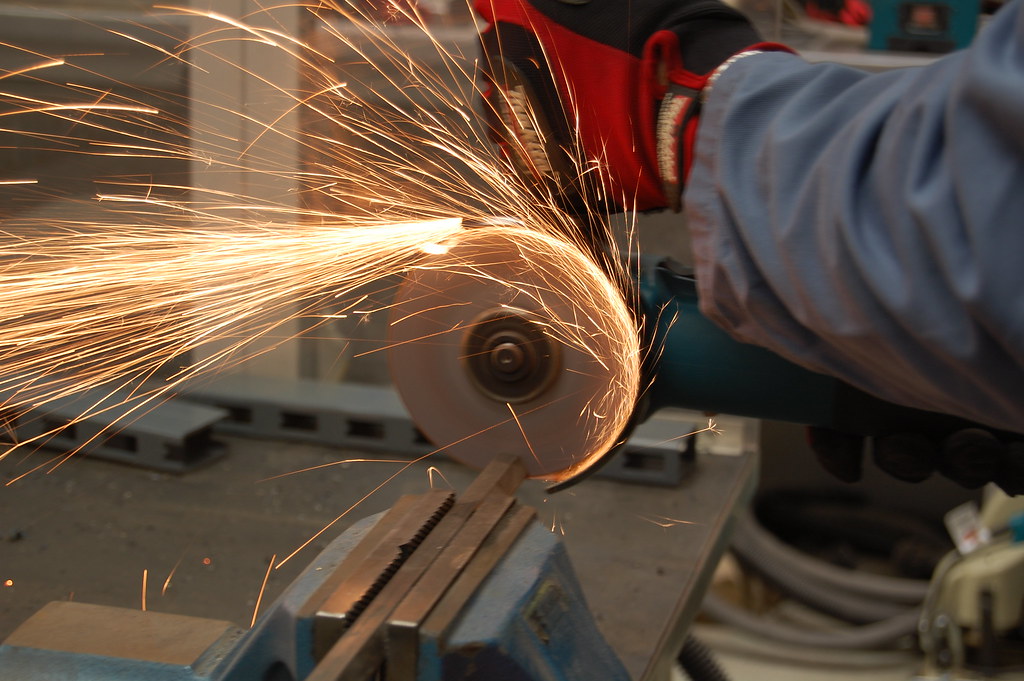Note: Metropolitan Shuttle, a leader in bus shuttle rentals, regularly sponsors coverage on Streetsblog San Francisco and Streetsblog Los Angeles. Unless noted in the story, Metropolitan Shuttle is not consulted for the content or editorial direction of the sponsored content.
Jeffrey Tumlin, formerly the Director of Strategy at NelsonNygaard Consulting Associates, a San Francisco-based transportation planning and engineering firm that focuses on sustainable mobility, was sworn in this week as the new director of the San Francisco Municipal Transportation Agency. As Streetsblog reported previously, advocates for better transit and safer, more livable streets are hopeful that the start of Tumlin's tenure will be a turning point for San Francisco.
Streetsblog shares that enthusiasm and welcomes Tumlin to his new position. And we have some suggestions for supplies and hardware Tumlin should add to his toolkit for 2020.
1) An angle grinder
Angle grinders, for cutting metal, are a favorite tool of bicycle thieves for slicing through bike locks. No, we're not suggesting Tumlin start stealing bikes. He could use a grinder on these bars:
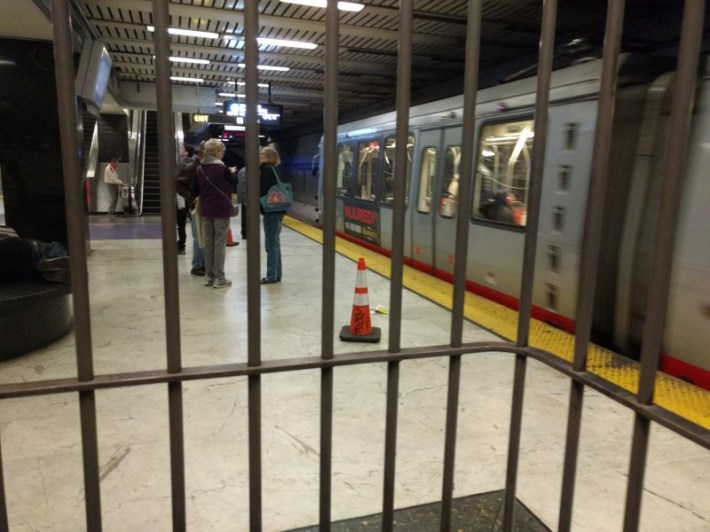
The transfers between Muni and BART at Embarcadero and Civic Center Stations are ridiculous. Never mind for a moment the absurdity of having to pay twice to transfer between the two systems. Too many have had the experience--pictured in the image above--of watching their train leave without them because they had to scramble up another floor from here to go through two sets of fare gates on the mezzanine level.
Groups such as Seamless Bay Area are fighting for a more integrated, more equitable transit system that puts the customer first. Let's move in that direction - and cut these bars.
2) Railway crossing gates
Speaking of coming first, it's time for a train moving 300 people to have priority over a handful of cars with one or two people in them. The picture below is of the San Diego trolley. San Diego is hardly a global leader in mass transit and planning, but they get this much right: in many places their point-to-point run times are about twice as fast as Muni.
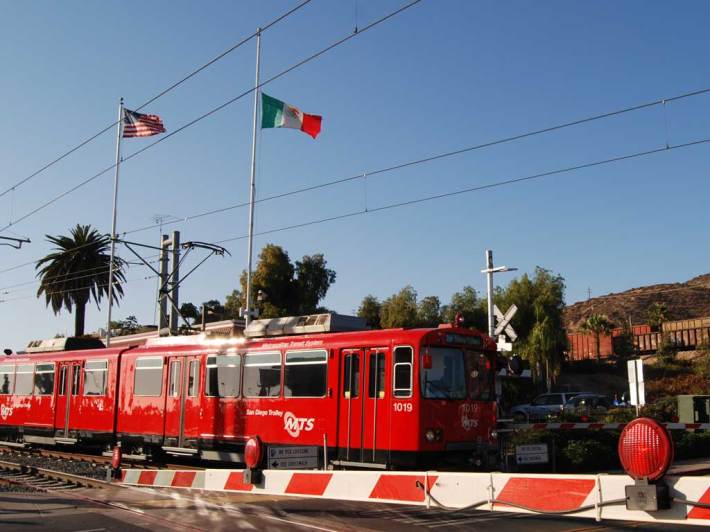
That's not because they have subway tunnels everywhere. It's because when the train comes, the gates come down, and the motor traffic stops. Muni trains, on the other hand, generally have no more priority at intersections than a single motorist in a Grand Cherokee. That's. Just. Wrong.
So order a bunch of crossing gates and install them at West Portal, St. Francis Circle, intersections along the T Third, and everywhere else a Muni train is forced to wait for motorists.
3) More red paint
This one is already well in motion--and thank goodness for that. Can we have some more please?
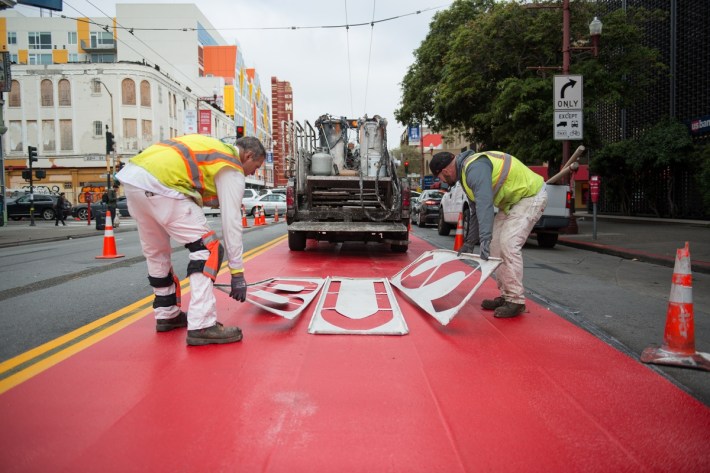
NYC, Los Angeles, and San Francisco's own experience show buses work better when they have their own lanes, with minimal impact on adjoining streets and car traffic generally. Merchants also do just fine with dedicated bus lanes. Buses should have their own lanes on any major bus route (and signal pre-emption, too).
So let's order more of that special red paint.
4) Decent bollards and Botts' dots
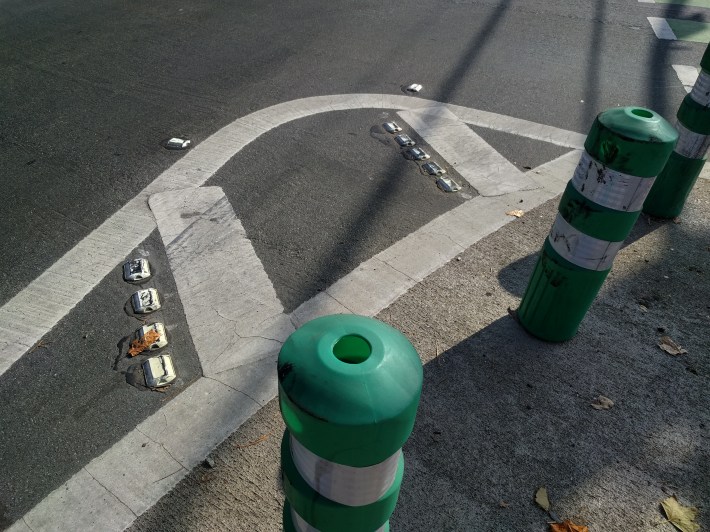
Last, but not least, let's stock up on these more robust-looking bollards favored in Oakland and San Jose, as well as some Botts' dots or equivalent pavement bumps, to help build robust protected bike intersections all around the city. San Jose has shown the way with dual-radii protected intersections (pictured above) that give motorists an audible and tactile signal if they take the turn too fast--and the K-71 posts make them believe that if they still don't slow down they'll damage their cars. Protected intersections are considered a 'best practice' by NACTO. Despite that, SFMTA continues building "mixing zones" that leave cyclists exposed to danger at every intersection. This has to be fixed.
5) And lastly... find a private retreat away from the city
No turning back now pic.twitter.com/OToWMb3NtS
— Jeffrey Tumlin 🏳️🌈 (@jeffreytumlin) December 16, 2019
You just took on a really, really tough job; one which would cause sane transportation careerists to run in the other direction. Don't let it wear you out. Find a cabin somewhere in the mountains. Or maybe a secluded beach is your thing? Either way, once or twice a year you're going to need some place to retreat to with no cell service, far away from the growling engines and angry motorists of San Francisco.
And we'll see you on the streets in 2020.
